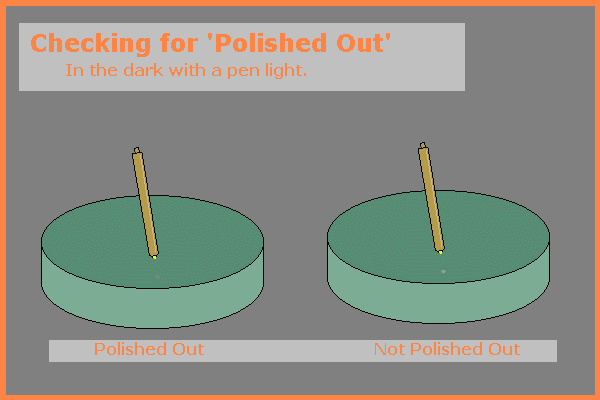
Start the inspection at the mirror center and work to the edge. If the mirror has been polished on top of the pitch lap for a while the center will be polished more than the edge.
If the mirror is not completely polished it is hard to tell before coating. After coating the hazy "oxidized" appearance is easy to see. The step from 900 grit to polish is much bigger than the step from 600 grit to 900 grit. The first part of polishing you can adjust the polishing mix and the pressure to make quite a bit of polishing resistance. You will need to anchor the pitch lap firmly and be careful not to turn the mirror edge. It is possible to more than double the polishing speed by making micro facets on the pitch lap. Micro facets can be made by scratching the pitch lap surface with a sewing pin or by pressing with plastic window screen between mirror and lap.
As soon as there is a bit of polish you can begin testing the mirror in the telescope. If the telescope is not ready then just do a bit of polishing every night and concentrate on getting the telescope ready. Some production outfits have two pitch laps. They put 900 grit on the first one and do all the mirrors with the 900 grit pitch lap first to produce a simi polish. Then switch to the regular pitch lap with cerium oxide. I have never heard of amateur mirror makers doing mirrors this way. If you use the same pitch lap on another mirror be sure to warm the pitch lap and mirror and press them together with books or weights before polishing.
Don't expect the coating to cover anything. High vacuum coating is used to shadow cast microbes so they can be seen in an electron microscope so the coating is very thin.